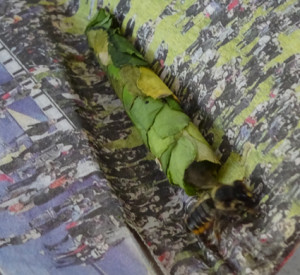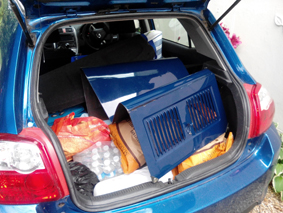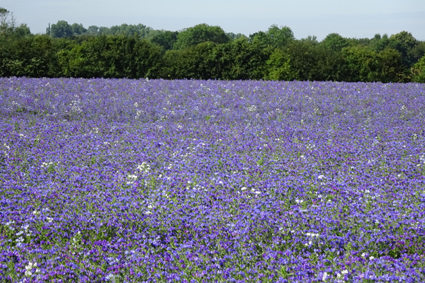Readers of my twitter feed may have been a little confused by pictures of Mildred’s minor surgery. I will explain.
 Mildred’s spare wheel is screwed to a hub, which is attached to the back of her bodywork. The hub is clamped through her bodyshell to a support bracket on the inside, which is attached to the ladder frame (hope you are keeping up).
Mildred’s spare wheel is screwed to a hub, which is attached to the back of her bodywork. The hub is clamped through her bodyshell to a support bracket on the inside, which is attached to the ladder frame (hope you are keeping up).
When preparing her for the wedding run a couple of weeks ago, I noticed cracks between the edge of the hub and the bodywork. Investigation showed that the inner spare wheel support had, in an earlier restoration, been cut away from the ladder frame, reducing its ability to support the weight of the wheel, which was left hanging from just the bodywork. Over time this had stressed and cracked the bodywork and rusted through the rim. Worse case scenario was that the wheel would, under its own weight and a few bumps in the road, literally pull away from the car, taking a piece of body with it.
The solution was not overly complicated, just fiddly and time consuming. Internally I rebuilt the missing section of the inner support. A bit of simple sheet metal work was needed. This ensured that the wheel is no longer simply hanging on the thin bodywork, it now has a direct support bracket to the ladder frame. I then tack welded the hub back to the shell to stop it cracking away again.
 Whilst I was working around the hub I decided to tackle a job I have had on the list for a long time. One of the 3 studs used to secure the spare wheel was loose and in not quite the right place.
Whilst I was working around the hub I decided to tackle a job I have had on the list for a long time. One of the 3 studs used to secure the spare wheel was loose and in not quite the right place.
I suspected a bodge, and found one. The support area around the stud had cracked and been roughly held in place with filler. This was never going to work. This is what was left after I had removed the filler.
 With the paint stripped back, and the welder out anyway, I welded it securely back in place, the correct position this time (the lower left of the 3 studs).
With the paint stripped back, and the welder out anyway, I welded it securely back in place, the correct position this time (the lower left of the 3 studs).
This is what it all looked like with the hub secured to the body and the stub welded up, ready for finishing.
The final job was a skim of fine filler to level it off. This is how filler should be used, not as a bodge to hide bad work. A coat of etch primer was applied and rubbed back to show minor imperfections, which were refilled and primed again.


That just about brings you up to date.
The problem I now have is finding matching paint. It is not possible to pop down to Halfords, since I have no idea what specific colour was used in the 80s when she was restored.
I need to visit a paint supplier with specialised equipment to measure and reproduce the paint mix for me. At least the repair is safe and protected so we can head out on the road again, albeit with a grey bottom!
 A couple of days ago I was in the utility room, when I noticed a bee fly into the fold of a newspaper.
A couple of days ago I was in the utility room, when I noticed a bee fly into the fold of a newspaper. A few more flights later and I caught her on camera.
A few more flights later and I caught her on camera. I left her in peace for the night, with the back door open so that she could fly early in the morning.
I left her in peace for the night, with the back door open so that she could fly early in the morning.













